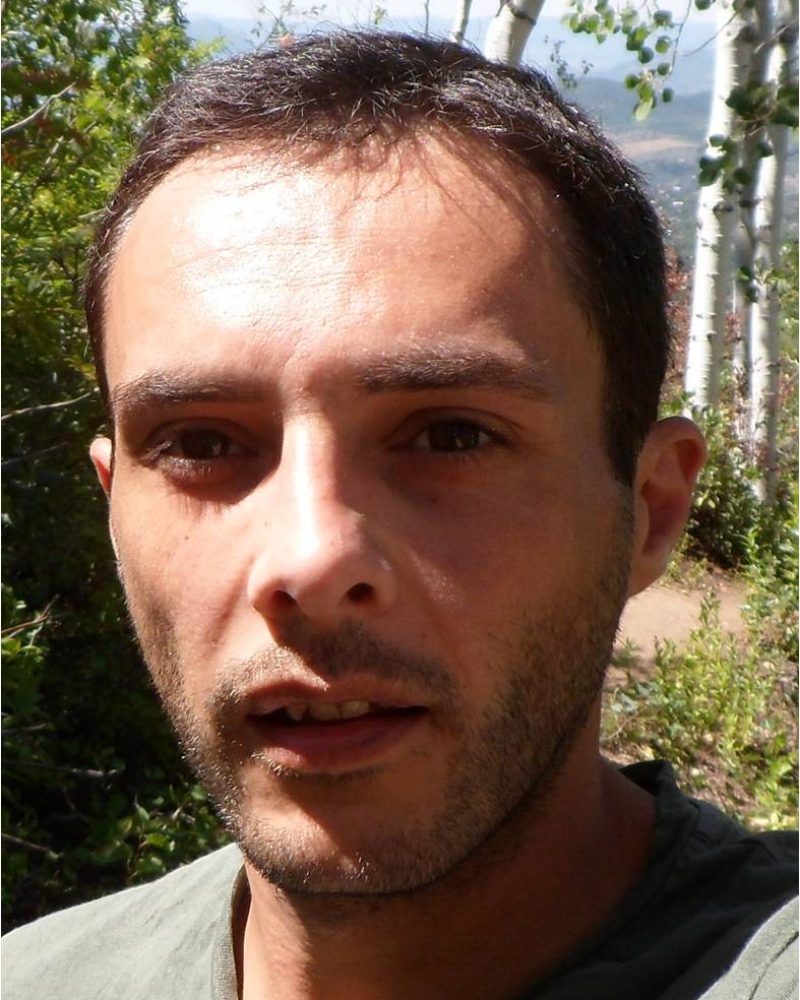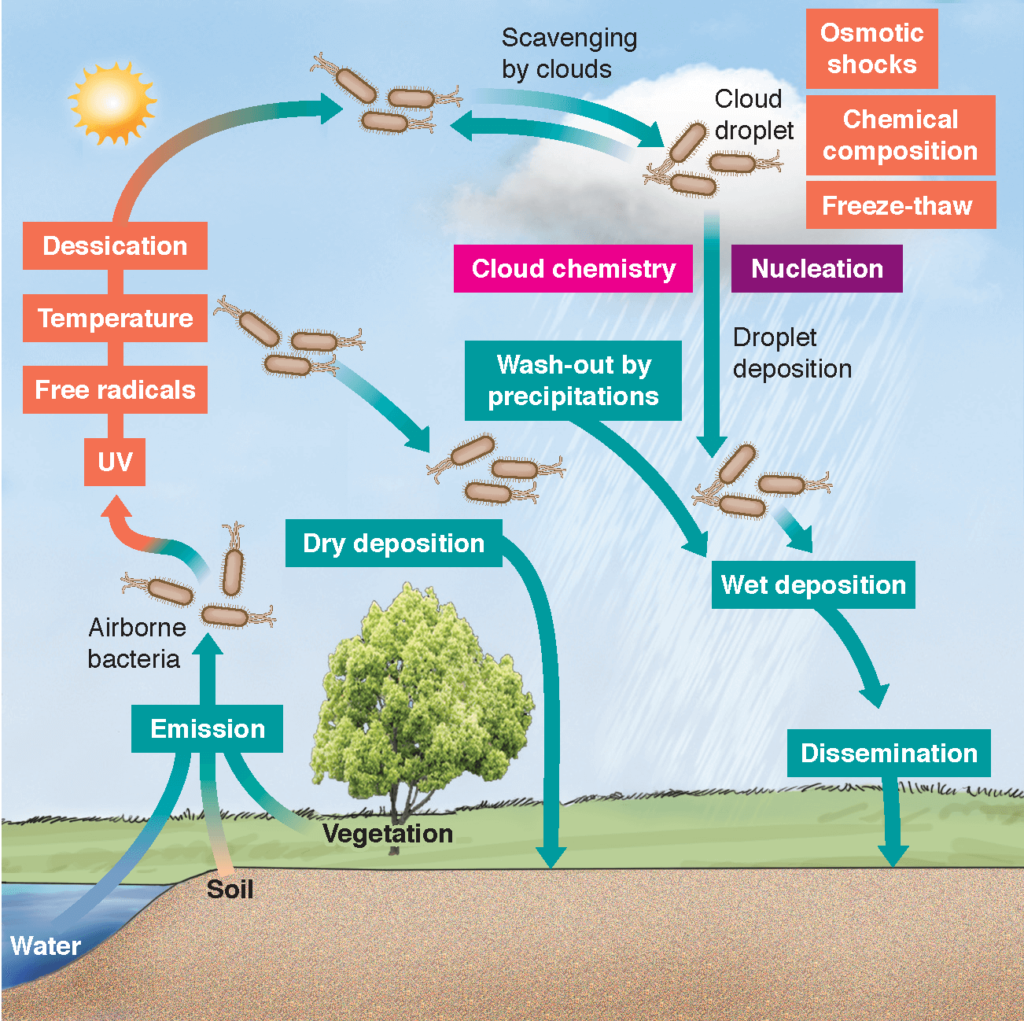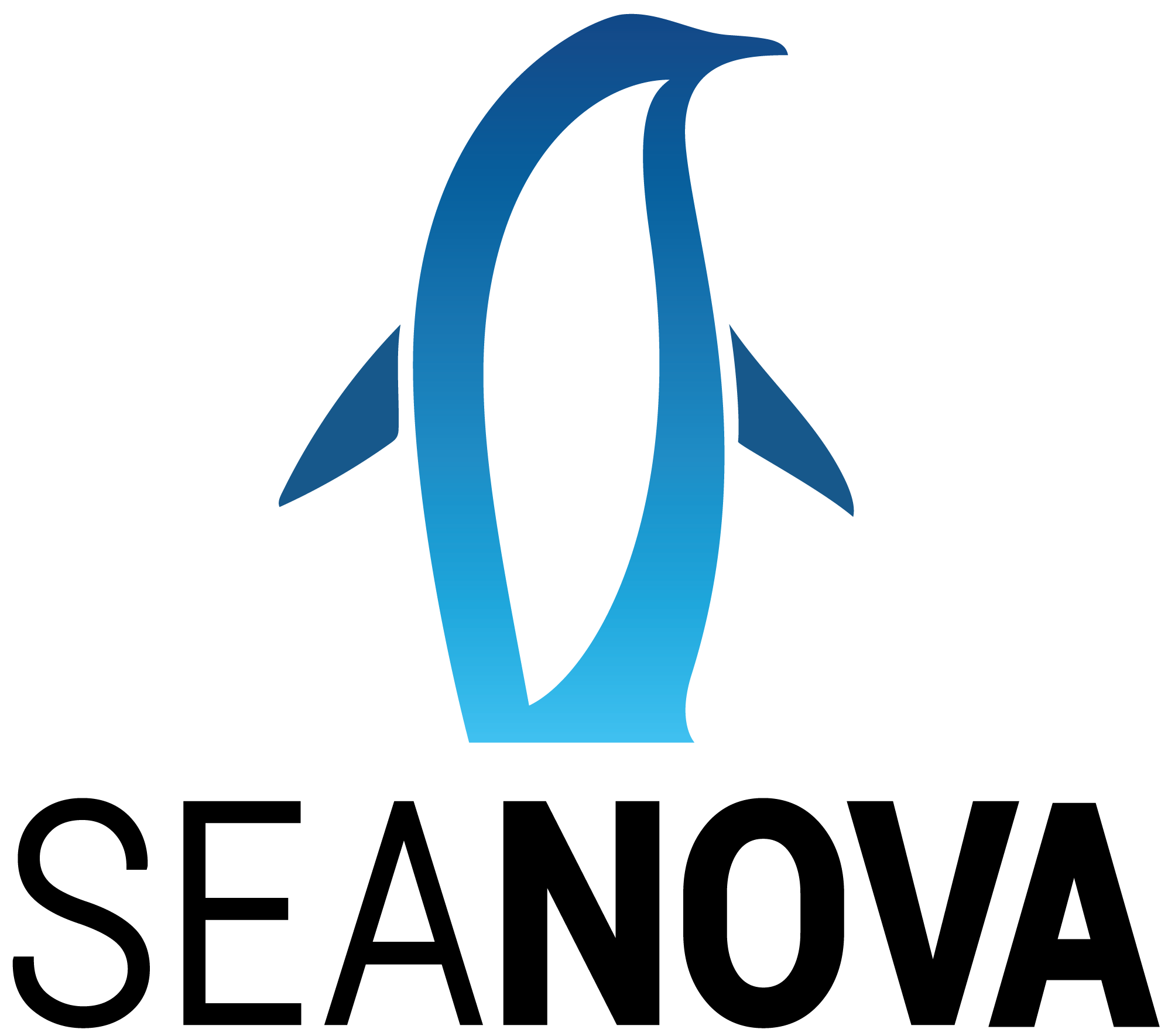How the “cloud people” cause both sunshine and rainfall
For Iodysseus, the study of cloud microbiology and its climatic and environmental impact serves as inspiration. Pierre Amato is a scientist at the Chemistry Institute of Clermont-Ferrand and has devoted 15 years of his life to investigating cloud microbiology alongside Anne-Marie Delort. In the following interview, Pierre explains what life is like for the organisms that inhabit clouds.
How can bacteria in cloud droplets trigger rainfall, survive under exposure to radiation and oxidizers, resist high-pressure environments, and capture iron? How can they influence global climate and pollution levels? The ocean contributes to the formation of clouds, and these urgent issues are being analyzed in Clermont-Ferrand, in the center of France. Pierre Amato works with Anne-Marie Delort at the Chemistry Institute of Clermont-Ferrand (ICCF, CNRS / Université Clermont Auvergne / SigmaClermont).
Micro-causes with macro-consequences on a global scale: between sea spray aerosols—samples taken by Iodysseus—and the clouds above the Puy-de-Dôme (meteorological observatory in central France), captured by ICCF, a connection (or interconnection) is being made through the major cycles of our biosphere.
Pierre Amato—research fellow at the CNRS (French National Center for Scientific Research)—is studying the links between the “little people of the sea” (phytoplankton) and cloud microbiology.
Pierre Amato compares the Iodysseus project to the Tara expedition, calling it “a Tara for aerosols and the atmosphere”.
Iodysseus - You have revealed biological activity in clouds, with multiple effects on the climate and environment. Are you saying that marine microorganisms have “superpowers”?
Pierre Amato – Yes, you could say that. Well, not all of these bacteria are special, as many of them are found on land as well. Some do, indeed, resist free radicals which would or should normally oxidize them. Their impact is linked to climate change, and is observable. To what extent, however, is still to be determined.
Iodysseus - How do we know what lifeforms are present in, for instance, a cumulonimbus?
Pierre Amato – At the Puy-de-Dôme atmospheric station of the l’OPGC (Observatoire de Physique du Globe de Clermont-Ferrand), in partnership with the Laboratory of Physical Meteorology, we use a droplet filter, a sort of “cloud vacuum”. This device collects water samples containing biomass—live specimens—from clouds. On average, there are approximately 10,000 microorganisms per milliliter. Then, we study the biomass, place it in a culture, and sequence its DNA to learn more about its abilities by studying its genetic makeup. At our observatory, we mostly study pathogens or microorganisms commensal to terrestrial plants—that is, they colonize their host without causing disease. We also study microorganisms that degrade organic matter in the ground, which can be found everywhere on land and in wetland areas. Among these, several microorganisms belong to the genus Pseudomonas, which is widespread. Our laboratory now has a collection unique in the world of microorganisms isolated from cloud vapor, totaling more than one thousand different strains.
Iodysseus - How do Pseudomonas and other microorganisms reach the clouds?
Pierre Amato – They have been “aerosolised” from surfaces—water, ground, vegetation—and then carried by wind before potentially being absorbed by clouds. Now, how do they survive in the extreme conditions of the upper atmosphere? These conditions are highly destructive: high levels of UV radiation, very low temperatures, various oxidizers, and other causes of osmotic shock—changes in osmotic pressure occurring during condensation and evaporation phenomena. Part of our research on cloud microbiology is studying how these organisms adapt.
Iodysseus - Could you explain this to a 6 year old?
Pierre Amato – Why not? I would explain that small creatures are trying to settle down as well as possible in a really harsh environment, very unfriendly. So, they change their environment. These tiny creatures snack on whatever they can catch, and they eliminate anything that could kill them. On the menu: tiny “crumbs”, called molecules. They’re flying around your bedroom, and everywhere in the air all around you. They’re so tiny that we can’t see them. These tiny creatures also have to get rid of other things that are dangerous to them. For example, the same things you might find in cleaning products that your parents use to wash the bathtub.
Iodysseus - Do you mean—for the older kids—antibacterial products?
Pierre Amato – Yes. These tiny creatures are, in fact, bacteria. Or microbes—invisible living organisms present everywhere, on your skin, as well as in your body. Just like you, they don’t want to die either! So they adapt and develop resistance. All of this is happening up in the sky, in the clouds that these bacteria call home.
Iodysseus - Could you explain in chemical terms?
Pierre Amato – Bacteria living in the atmosphere are fond of volatile compounds such as formaldehyde, which occupies a central role in chemistry. On the other hand, they strongly dislike hydrogen peroxide—in theory, their biggest enemy. These bacteria have numerous effects on us, which are, unfortunately, too often ignored.
Iodysseus - To what extent are we affected? And firstly, what is hydrogen peroxide doing up there?
Pierre Amato – H2O2 is its chemical formula. It is produced in the air through a photochemical reaction triggered by UV rays from the sun. It is a strong oxidizer which produces radicals that are destructive to living cells (editor’s note: including ours), like bacteria. But in the atmosphere, these radicals remove hydrocarbon molecules and other carbon compounds which are found in pollution. Technically, the bacteria in clouds possess enzymes which protect them from oxidizing agents which would normally destroy them. They are even able to metabolize hydrogen peroxide, reducing it to water (H2O) and oxygen (O2). Concretely, oxidizers destroyed by bacteria are less available for decontaminating the air than we may think. Not taking account of this phenomenon would be ignoring a non-negligible parameter when we try to study various atmospheric pollutants. However, no current model includes these biological phenomena in cloud chemistry, nor do they include CO2 emissions from these bacteria. And this will have an impact on precipitation, but that’s another story.
Iodysseus - Do you mean that bacteria cause rainfall? How is that possible?
Pierre Amato – You must first understand three things. 1) The freezing of cloud droplets often triggers precipitation. 2) Water, depending on its purity, can freeze between 0°C and -40°C, and suspended particles act as catalysts to initiate the freezing process. 3) Depending on the nature of these catalysts, the probability of freezing rises and falls, up to a maximum of 100% at -40°C. Yet, we have identified what the best catalyst is for freezing water at a relatively-high temperature, around -2°C. It is a bacterium, a plant pathogen, Pseudomonas syringae, found in relative abundance in clouds. P. syringae synthesizes a protein shaped like an ice crystal. This ice-nucleating activity encourages the transformation of cloud droplets into ice crystals, which causes them to grow and eventually induces their precipitation. Thus, there is a feedback loop between plants, bacteria, and clouds, and rainfall is linked to this ice-nucleating activity. In nature, in situ, this concept of “bio-precipitation” still needs to be verified. However, there is no doubt that what causes clouds to freeze, and potentially produce rain, is biological in nature—it’s alive.
Iodysseus - The role of marine biomass, phytoplankton, and other microorganisms being studied by Iodysseus, is at the center of the carbon cycle and atmospheric CO2 absorption. Furthermore, marine organisms are everywhere, all the way up on mountaintops, and even in space—on the portholes of the American space shuttle. What is their role in the phenomena you are studying?
Pierre Amato – Although information is scarce on the biological contents of sea clouds, we do know that they are spreading all around the globe.
Their presence on a NASA space shuttle, outside Earth’s atmosphere, indicate that the biosphere’s borders aren’t well defined. I would add that in molecular biology, in general, if we look very carefully, we can find nearly anything just about anywhere. In reality, however, it depends on where the cloud samples come from. Let’s imagine that we take the marine or terrestrial surface and that we “expand” it, or that we “shake” it out into the atmosphere, and it’s apparent that we are more greatly affected by sources close by than ones further away. Oceanic traces are present on the continents, that’s for sure. In Clermont-Ferrand, hundreds of kilometers from the seaside, in this station where we usually perform our capture procedures, traces of terrestrial vegetation are what predominate. Logically, we encounter more terrestrial and freshwater species than saltwater specimens. There are microbiological systems present in atmospheric oceanic masses, which can be identified by their chemical “fingerprints”; however, they still need to be quantified.
Iodysseus - Don’t marine microalgae also play a role in the formation of clouds?
Pierre Amato – Of course. Dimethyl sulfide, or DMS—which has a characteristic smell of fermented cabbage—emitted by oceanic phytoplankton, release sulfates, which are a vital precursor for cloud formation. This feedback cycle contributes, to a certain extent, to the self-regulation of the planet’s climate. In order to go further, we are focusing on the ability of certain bacteria to produce surfactants, compounds like the ones in laundry detergent. In short, these substances help the water to stick to hydrophobic surfaces—which would have effects on the formation of droplets. We’ve identified such bio-surfactants in the atmosphere. We already know their impact on the atmosphere: the remaining question is whether this impact is significant, and to what extent.
Iodysseus - Would it be possible to develop a model which begins at the birth of the clouds and extends to the ocean-atmosphere interface, including precipitation on the terrestrial zones, alongside oceanographic teams such as—for example—Iodysseus?
Pierre Amato – It will come. Although we operate mainly in Puy-de-Dôme, we don’t want to limit ourselves to studying the continent. It would be absurd to limit ourselves, considering that the ocean covers two thirds of the surface of the planet. The Puy-de-Dôme station belongs in particular to the global network for monitoring greenhouse gases in the atmosphere (GHG) and we are participating in a study of the distribution of biodiversity in the atmosphere, from the North Pole to the South Pole. Currently, we are also involved in a project in Réunion, in the Indian Ocean, with the aim of understanding the chain of interactions between marine bio-aerosols and the local weather background—everything from the rain to the sea spray, stage by stage, from sea level to the top of the Maïdo, one of Réunion’s highest peaks (2190 m).
Iodysseus - How far have we come in our understanding of the biochemistry of the atmosphere and its environmental implications?
Pierre Amato – I would say that we are just at the beginning. It’s a relatively new area of research. In 1860, Pasteur was already collecting samples of “germs” in the air, and around 1935, Charles Lindbergh, the aviator, collected organisms while in flight. However, it wasn’t until the beginning of the 21st century that the first studies on the impacts of atmospheric biochemistry were published. Personally, I’ve been working on it for 15 years. I am about to publish the transcriptome of clouds, which is the analysis of all the genes expressed by the biological communities inhabiting clouds. Now, we have an in-depth overview of what it’s like to live in a cloud. We can observe details such as the fight against radicals, already mentioned, but also the presence of bacterial siderophores which capture the iron that is essential to all forms of life on Earth. However, the impacts on receptive ecosystems still need to be studied. What will happen to these atmospheric colonizers in the ecosystem that receives them? How are they disturbed or impaired? What interactions will occur? How does air pollution interfere? To sum up, there are so many different things that we absolutely must understand before we no longer have the means to, or there’s no longer any point in doing so. In other words, the clock is ticking.











